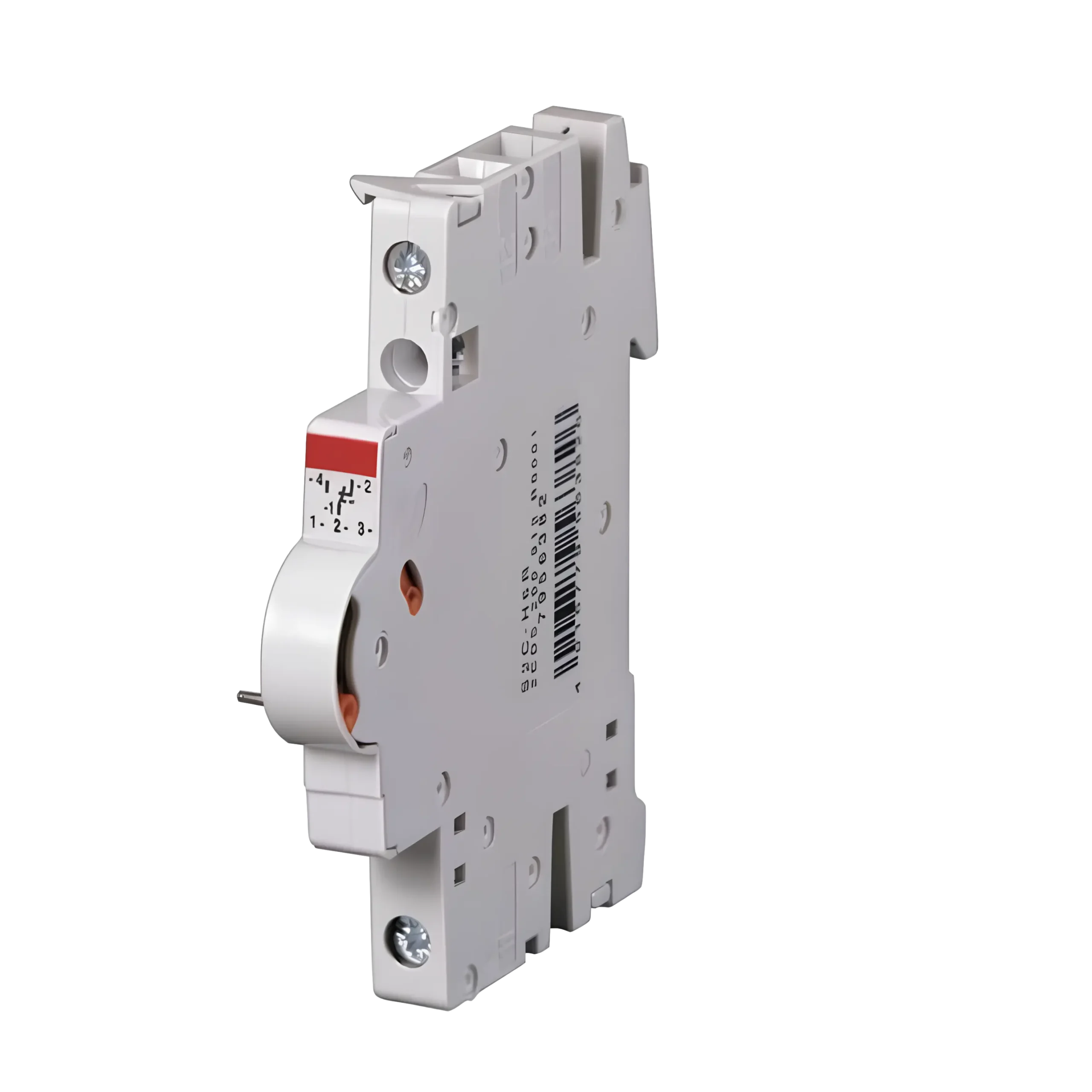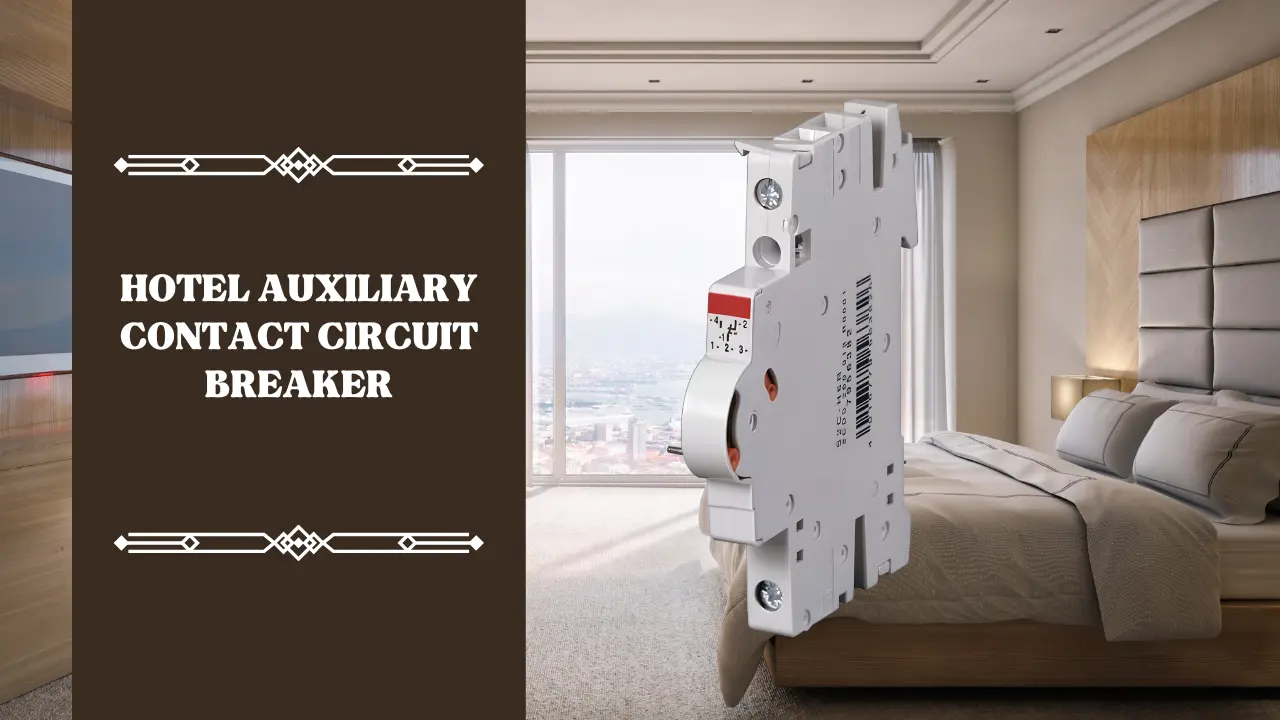Circuit breakers are an essential component of any hotel’s electrical system, responsible for interrupting power when dangerous overcurrent conditions occur. But did you know that circuit breakers contain additional “auxiliary” contacts that serve various monitoring, control, and signaling functions?
These auxiliary contacts play a vital role in enhancing the safety, reliability, and functionality of a hotel’s electrical infrastructure.
What Are Auxiliary Contacts?
Auxiliary contacts are supplementary contacts within a circuit breaker that are mechanically linked to the primary current-carrying “main” contacts. While the main contacts connect and disconnect the protected circuit from the power supply, auxiliary contacts switch a separate low-power control circuit and do not directly carry the operating current.
There are two main types of auxiliary contacts:

Signal Contacts: Operate specifically when the breaker trips due to a fault condition. These contacts remain closed if the breaker is manually switched off.
Key Applications in Hotels
Monitoring Circuit Breaker Status
Auxiliary contacts allow remote monitoring of a circuit breaker’s on/off status. This is useful for hotel maintenance personnel to quickly check the status of breakers feeding critical loads like elevators, security systems, and emergency lighting. It also aids troubleshooting by indicating if a breaker has tripped.
Signaling Tripped Breakers
Signal contacts are wired into annunciator or alarm panels to identify fault locations. This quickly alerts maintenance staff to investigate and reset tripped breakers, minimizing downtime of affected equipment.
Interlocking Control Circuits
Auxiliary contacts enable layered interlocking schemes, ensuring equipment sequences properly. For instance, an elevator breaker’s contacts may lock out elevator controls until emergency power is ready. This prevents unsafe operation during power transfers.
Undervoltage Trip Coordination
Undervoltage release devices trigger breakers to open when voltage dips below a set threshold. Their release coils can be wired through position contacts to selectively trip only lower priority breakers. This avoids unnecessary tripping of critical loads during minor voltage sags.
Powering Status Lights and Alarms
Auxiliary contacts switch indicator lights, alarm sirens, and other low-current status devices. For example, a breaker’s normally closed contact could energize a “breaker tripped” indicator.
Key Benefits for Hotel Electrical Systems
· Enhanced reliability: Advanced monitoring and control functions enabled by auxiliary contacts minimize downtime by speeding response to electrical issues.
· Improved safety: Interlocks prevent unsafe operating scenarios. Signaling contacts provide rapid notification of faults to maintenance staff.
· Increased system coordination: Selective undervoltage tripping maintains power to key loads during minor disturbances. Status indications aid proper sequencing of equipment.
· Reduced arc flash hazards: Being able to remotely check breaker status reduces the need for dangerous panel inspections during troubleshooting.
· Longer equipment life: Auxiliary trip coordination prevents unnecessary stress on components from repeated manual resetting after minor voltage sags.
Auxiliary Contact Design Considerations

· Contact type: Are position or signal contacts needed for the application? Position contacts work for status monitoring, while signal contacts are better for tripped breaker alarms.
· Contact form: Normally open or normally closed? The contact form must suit the control circuit – for example, NO for breaker closed indicators.
· Number of contacts: More contacts allow control of multiple devices. But contacts add cost, so only install what’s needed.
· Current rating: Contacts must have adequate continuous current rating and interrupting capacity for the application.
· Control circuit voltage: The contact rating must match the voltage of the controlled circuit, such as 120V or 24V.
· Short circuit withstand: Verify contacts can safely interrupt fault currents until primary protection clears the fault.
· Contact sequence: Proper sequence is critical for interlocks. Understand timing of aux. contact switching versus the main breaker contacts.
· Expected switching frequency: For frequent operation, ensure contacts are rated for high mechanical endurance.
By taking these factors into account, auxiliary contacts can be configured to provide maximum utility for hotel electrical systems while ensuring safe, reliable performance. Discuss auxiliary contact requirements with an applications engineer when specifying new breakers.
Example Configurations for Hotel Circuit Breakers
Here are some typical auxiliary contact applications for hotel circuit breakers:
| Example Configurations for Hotel Circuit Breakers |
|---|
Guest Room Branch Circuits
|
Elevator Breaker
|
Kitchen Appliance Breaker
|
Emergency Lighting Breaker
|
